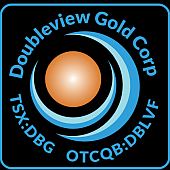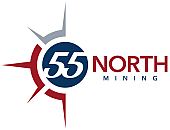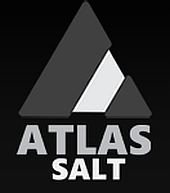 Headwater Gold acquires Lodestar project
Headwater Gold acquires Lodestar project
2023-03-07 12:36 ET – News Release
Mr. Caleb Stroup reports
HEADWATER GOLD ACQUIRES ADDITIONAL GOLD PROJECT IN THE AURORA DISTRICT, NEVADA AND OUTLINES 2023 WORK PLAN
Headwater Gold Inc. has acquired the Lodestar epithermal gold-silver project located in the Aurora mining district, Nevada, United States.
Highlights:
- Headwater has acquired the Lodestar project in the Aurora district through claim staking and an option to acquire a 100-per-cent interest in pre-existing claims from a private party.
- The property is located immediately adjacent to the past-producing high-grade Aurora mine, owned by Hecla Mining Company.
- The property represents a new 100-per-cent-owned exploration opportunity located approximately 10 kilometres north of the company’s Spring Peak project, where it has recently made two new high-grade discoveries (see news release dated March 2, 2023).
- Silica sinter exposures and other high-level epithermal alteration features on the property are geologically analogous to the Spring Peak project and suggest the potential for preserved high-grade epithermal veins at depth.
- Headwater plans to complete geologic mapping, soil sampling and CSAMT (controlled-source audio-magnetotelluric) geophysical surveys concurrent with planned work at its Spring Peak project to define high-priority drill targets on the property.
Caleb Stroup, the president and chief executive officer of the company, states: “We are very excited to have acquired another high-quality asset in the Aurora district, which is already a major focus area for Headwater. Since entering the district with our Spring Peak project acquisition 18 months ago, we have demonstrated our ability to target high-grade mineralization below shallow epithermal alteration, resulting in multiple high-grade vein discoveries. We will be directly applying what we have learned at Spring Peak to explore Lodestar, which is analogous in many ways. Both projects contain large exposures of silica sinter, which, at Spring Peak, directly overlies the new Disco zone discovery. Limited shallow historic drilling on both projects encountered weakly anomalous gold but, importantly, was too shallow in the epithermal system to adequately test for higher-grade mineralization in the boiling zone at depth. At Spring Peak, the company has successfully utilized CSAMT geophysics to directly target feeder structures at depth and it is anticipated CSAMT will be utilized immediately at Lodestar, where much of the exploration potential occurs under shallow postmineral cover.”
About the Lodestar project
The Lodestar project is located in the Aurora mining district of west-central Nevada and adjoins Hecla’s past-producing Aurora mine complex, where existing infrastructure includes a 350-ton-per-day mill, currently on care and maintenance, several production water wells and high-voltage three-phase power. The property is also located immediately north of the company’s Spring Peak project, where Headwater has recently announced the new Disco and Opal Ridge high-grade discoveries (see news release dated March 2, 2023). These high-grade vein discoveries and Hecla’s 2022 exploration drilling at Aurora (see Hecla news release dated Nov. 9, 2022) suggest good potential for additional high-grade discovery exists at Lodestar.
Historic exploration at the property focused on surface rock chip sampling of the prominent silicified ridgeline at the core of the property, sampling of a short historic adit and several shallow reverse circulation (RC) holes in this immediate area. RC drilling completed on the property by Echo Bay Exploration and Borealis Exploration in the 1980s consisted of four shallow drill holes immediately adjacent to the silicified ridgeline, designed to test for a near-surface bulk-tonnage-type deposit. Headwater has obtained assays but not exact collar and survey information for these historic holes, the deepest of which reached a maximum total depth of 91.44 metres and contained a 10.67 m interval of 0.291 gram per tonne Au. The company views the anomalous gold observed in the historic drilling, above the interpreted epithermal boiling zone, to be a positive indication for precious-metal-bearing structural feeders at depth, which remain untested.
The most prominent alteration feature on the Lodestar land package is the strongly silicified and brecciated ridgeline capped by silica sinter, which is exposed as a window through young postmineral lava flows that form shallow cover across most of the claim block. The northern part of the ridgeline contains a thick accumulation of silica sinter that is similar in character to sinter exposed above the Disco zone at the company’s Spring Peak project (see news release dated March 2, 2023). Silica sinter at Lodestar is often laminated with low-amplitude algal mats containing reed casts and palisade textures, and locally contains interpreted geyserite textures. These diagnostic sinter textures and the thickness of sinter accumulation imply a prolonged period of energetic hydrothermal activity localized in the project area.
Immediately south of the sinter, the silicified ridgeline is a resistant silicified breccia body which is steeply inclined to the west. This breccia contains large, angular, rotated clasts of silicified rhyolite as well as opaline and chalcedonic silica veins, and vein fragments imply a high-energy hydrothermal origin of brecciation. In most places, the breccia is strongly silicified and oxidized, and both the breccia body and overlying sinter are cut by abundant crosscutting banded chalcedonic veins. Headwater geologists interpret these features to represent a hydrothermal vent breccia exposed along a steep west-dipping structural zone that disappears under shallow, young volcanic cover to the north and south and remains untested below the projected boiling zone at depth.
Historic rock chip samples along the exposed extent of the silicified ridgeline contained anomalous gold, silver and epithermal pathfinder element values. A historic rock chip sample of silicified breccia collected along the southern portion of the ridgeline returned 261 parts per billion Au and 430 ppb Ag, and another grab sample of breccia with crosscutting banded chalcedonic veins returned 150 ppb Au and 530 ppb Ag. Channel samples collected in a historic adit into the southern portion of the ridgeline encountered increasing gold values toward the interpreted feeder structure, where the sampling ended in values between 50 ppb Au and 100 ppb Au.
The thick exposure of silica-sinter and silicified breccia with highly anomalous mercury-arsenic-molybdenum-antimony epithermal pathfinder element geochemistry, both cut by banded chalcedonic veins, suggest the core of the Lodestar property comprises the upper levels of a fully preserved epithermal system. The alteration style and intensity, sinter characteristics, and existing rock geochemistry of the system all share numerous encouraging similarities with the company’s adjacent Spring Peak project. Historic RC drilling on the property was also completed in a similar fashion to the company’s Spring Peak project; shallow holes failed to test for potential high-grade mineralization at depth. Based on analogous characteristics to the company’s Disco zone target area at Spring Peak, Headwater geologists have defined a clear target area approximately 150 m below the sinter exposure, which would immediately test potential high-grade veins associated with the interpreted feeder structure.
2023 work plan
The exploration model that the company intends to deploy at Lodestar is similar to that used at the company’s nearby Spring Peak project. A combination of geology, geochemistry and geophysics will be utilized to develop the highest-priority targets to test for high-grade epithermal vein mineralization in structural feeder zones below and adjacent to the outcropping alteration.
The company is planning a CSAMT resistivity survey totalling 13.5 line-kilometres on 250-metre-spaced profiles to identify high-resistivity targets at depth and explore beneath the exposed alteration as well as the shallow, young volcanic cover that blankets most of the property. Concurrently, the company intends to complete a soil sampling program consisting of approximately 325 soil samples collected along a 25 m by 100 m spaced grid. Detailed geologic mapping and infill rock chip sampling focused on the core area of exposed alteration will also be completed with the aid of high-resolution drone imagery and a digital surface model. The results of this preliminary work will be used to design a maiden drill campaign at the property.
Acquisition terms
The Lodestar project consists of 121 unpatented mining claims staked by Headwater Gold and 12 unpatented mining claims acquired from a private prospector (the vendor claims). By making an initial cash payment of $20,000 (U.S.) and escalating annual payments, Headwater retains a 30-year option to purchase an undivided 100-per-cent interest in the vendor claims for a one time payment of $1.5-million (U.S.) subject to a 3-per-cent net smelter return royalty, of which an initial 1 per cent can per purchased at any time for $1-million (U.S.) and an additional 1 per cent for $2-million (U.S.) resulting in a postbuydown 1-per-cent NSR.
About Headwater Gold Inc.
Headwater Gold is a technically driven mineral exploration company focused on the exploration and discovery of high-grade precious metal deposits in the Western United States. Headwater is aggressively exploring one of the most well-endowed and mining-friendly jurisdictions in the world with a goal of making world-class precious metal discoveries. Headwater has a large portfolio of epithermal vein exploration projects and a technical team comprising experienced geologists with diverse capital markets, junior company and major mining company experience. The company is systematically drill testing several projects in Nevada, Idaho and Oregon, and in August, 2022, announced a significant transaction with Newcrest Mining Ltd. where Newcrest acquired a 9.9-per-cent strategic equity interest in the company and entered into earn-in agreements on four of Headwater’s projects.
Qualified person
The technical information contained in this news release has been reviewed and approved by Scott Close, PGeo (158157), a qualified person as defined in National Instrument 43-101 — Standards of Disclosure for Mineral Projects.
We seek Safe Harbor.




























